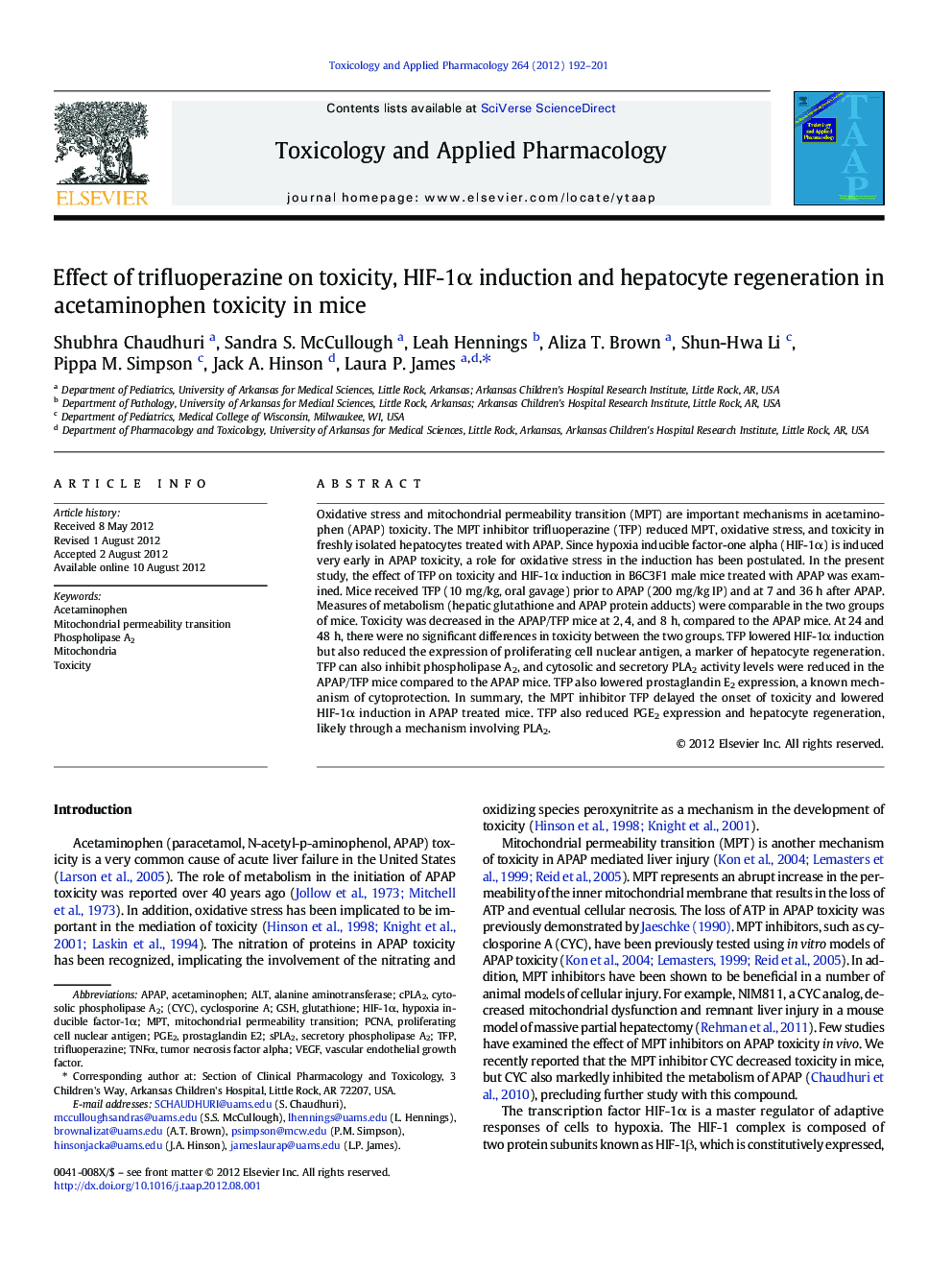| Article ID | Journal | Published Year | Pages | File Type |
|---|---|---|---|---|
| 5846749 | Toxicology and Applied Pharmacology | 2012 | 10 Pages |
Oxidative stress and mitochondrial permeability transition (MPT) are important mechanisms in acetaminophen (APAP) toxicity. The MPT inhibitor trifluoperazine (TFP) reduced MPT, oxidative stress, and toxicity in freshly isolated hepatocytes treated with APAP. Since hypoxia inducible factor-one alpha (HIF-1α) is induced very early in APAP toxicity, a role for oxidative stress in the induction has been postulated. In the present study, the effect of TFP on toxicity and HIF-1α induction in B6C3F1 male mice treated with APAP was examined. Mice received TFP (10 mg/kg, oral gavage) prior to APAP (200 mg/kg IP) and at 7 and 36 h after APAP. Measures of metabolism (hepatic glutathione and APAP protein adducts) were comparable in the two groups of mice. Toxicity was decreased in the APAP/TFP mice at 2, 4, and 8 h, compared to the APAP mice. At 24 and 48 h, there were no significant differences in toxicity between the two groups. TFP lowered HIF-1α induction but also reduced the expression of proliferating cell nuclear antigen, a marker of hepatocyte regeneration. TFP can also inhibit phospholipase A2, and cytosolic and secretory PLA2 activity levels were reduced in the APAP/TFP mice compared to the APAP mice. TFP also lowered prostaglandin E2 expression, a known mechanism of cytoprotection. In summary, the MPT inhibitor TFP delayed the onset of toxicity and lowered HIF-1α induction in APAP treated mice. TFP also reduced PGE2 expression and hepatocyte regeneration, likely through a mechanism involving PLA2.
⺠Trifluoperazine reduced acetaminophen toxicity and lowered HIF-1α induction. ⺠Trifluoperazine had no effect on the metabolism of acetaminophen. ⺠Trifluoperazine reduced hepatocyte regeneration. ⺠Trifluoperazine reduced phospholipase A2 activity and prostaglandin E2 levels.
